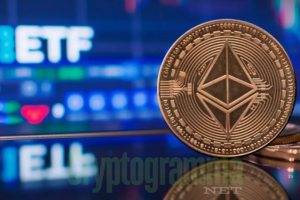Exploring the Ethereum Future: Why ETH Could Reach $30,000

Taking copies of my research and analysis about Ethereum, this article discusses the future of ETH and whether it warrants investment in it. After the implementation of EIP-1559 and the advancements in staking, Ethereum is undergoing immense transformation. Let’s get deeper into what impacts these factors bring to the Ethereum future, the possible price fluctuations, and if ETH will be able to hit the new record highs.
Ethereum Future: The Beginning
Not many people know that ETH now has the EIP-1559 mechanism, which facilitates the automatic burning of all base user fees.
Why is this necessary?
First and foremost, EIP-1559 aims to gradually reduce ETH issuance, which should positively affect ETH prices in the future. The principle is that the less “product on the market,” the higher its price grows.
Ethereum Improvement Proposal (EIP) 1559 is an upgrade that happened on August 5, 2021 to change how Ethereum calculates and processes network transaction fees (called “gas fees”). The upgrade made Ethereum transactions more efficient by using a system of block-based base fees, and sender-specified max fees, rather than bidding on gas prices to more evenly incentivize miners in periods of high or low network congestion. It was packaged with the London hard fork. Four other EIPs will join EIP 1559 in London.
For beginners – there are two main types of tokens based on their economic models – inflationary and deflationary.
Inflationary Tokens:
- Example: ATOM (Cosmos network token).
- Model: In inflationary tokens, the number of tokens in circulation increases over time. This can be due to the release of new tokens through mining, staking, or other mechanisms rewarding network participants.
- Purpose: The main goal of inflation is to stimulate network participation, ensure security, and develop the ecosystem. New tokens are often used to reward validators or holders who participate in maintaining and protecting the network.
- Risks: Excessive inflation can lead to token devaluation if supply growth exceeds demand.
Deflationary Tokens:
- Example: ETH (Ethereum after the implementation of EIP-1559).
- Model: In deflationary tokens, the number of tokens in circulation decreases over time. This is achieved through token burning mechanisms, where a certain portion of transaction fees or other charges is removed from circulation.
- Purpose: The primary goal of deflation is to increase the token’s value by reducing its overall supply. This can make the token more attractive for long-term investments.
- Advantages: Deflation can encourage holding tokens as owners expect their value to increase over time.
There’s no point in discussing which type is more effective. The important thing to understand is that there is less Ether every day.
In the past year, 973,000 ETH or $3.5 billion have been burned. Since the implementation of the EIP-1559 standard, the circulating supply of ETH has decreased by 0.7%. Yes, by a whole 0.7%.
How Will an ETF Impact the Ethereum Future
Large institutional funds will come with massive money and appetites, and there simply isn’t enough Ether on the market. Will this lead to new global highs and genuine euphoria? What do you think?
The volume of staked ETH is increasing.
Here’s a little secret: the circulating supply of ETH is steadily decreasing not only due to EIP-1559 but also because of staking.
Currently, 27.62% of the total existing ETH supply is staked.
What is staking? Staking is a process where cryptocurrency holders lock up their tokens to participate in maintaining and securing a blockchain network. In return, they receive rewards in the form of new tokens. You can learn more about staking here:
Crypto Staking Explained | Liquid Staking | Tezos Staking | Solana Staking
During periods of high activity, funds have repeatedly stated that they will be registering ETH staking ETFs. Although it’s hard to imagine now, there is a chance.
Why is this important?
The increase in staked ETH leads to a reduction in the available supply on the market, potentially causing a shortage and, consequently, a rise in the token’s price. Investors and funds understand this and might increase their investments in staking, creating even more demand for ETH and impacting its price.
Impact on long-term prospects:
- Increased network security: The more ETH is staked, the higher the network’s security level. Validators who lock up their tokens are incentivized to maintain the network’s integrity and security.
- Encouragement of long-term investments: Staking encourages holders to keep their tokens long-term, expecting both the token’s value to rise and rewards from staking.
What’s next? With the introduction of staking and the possible advent of an ETH ETF, interest in Ethereum continues to grow. Institutional investors see the steady decrease in supply and opportunities for passive income through staking. Thus, they could become key players in the ETH market in the coming years.
I believe these factors make ETH even more attractive for long-term investments. Bitcoin might lose its leading position and cede its market dominance.
Therefore, I have set clear price targets before which I will not sell a single Ether from my portfolio.
I’m expecting ETH to reach $30,000 and no corrections scare me.




